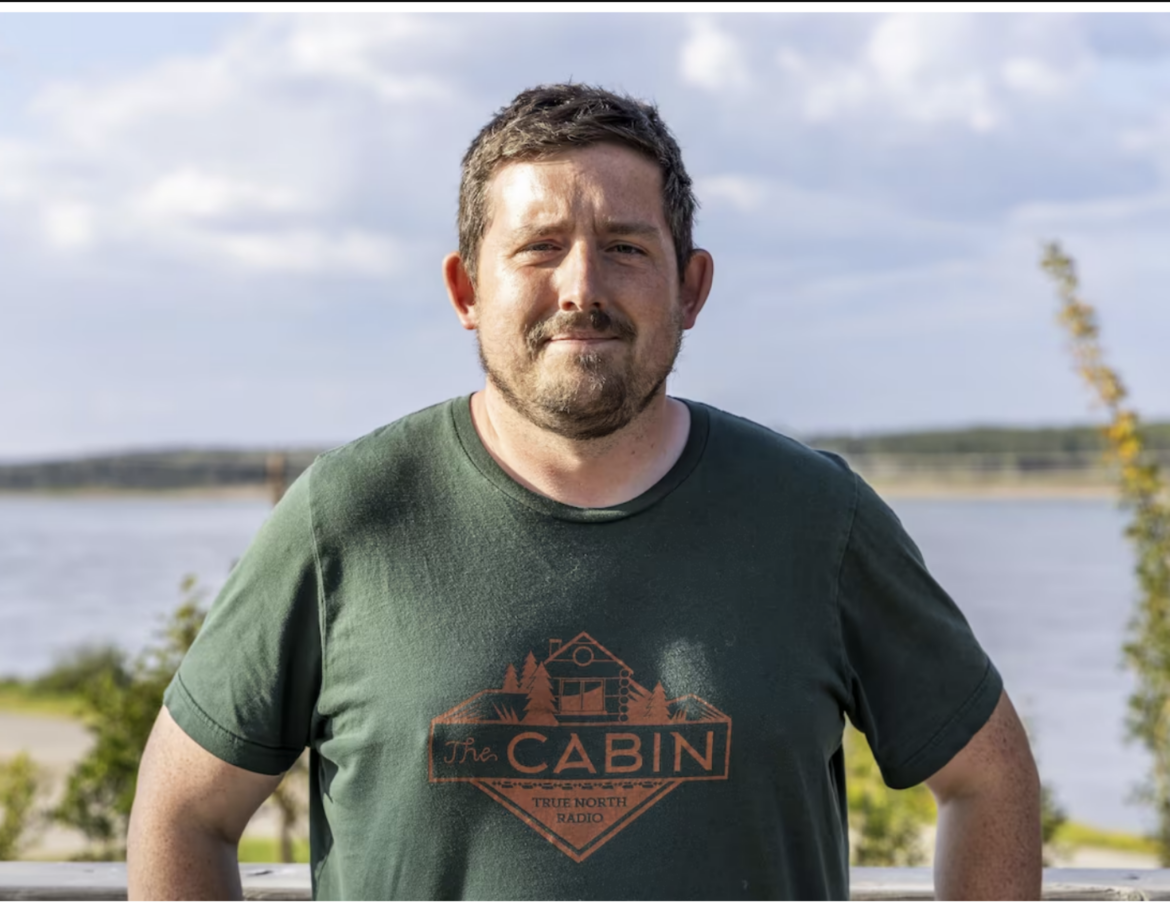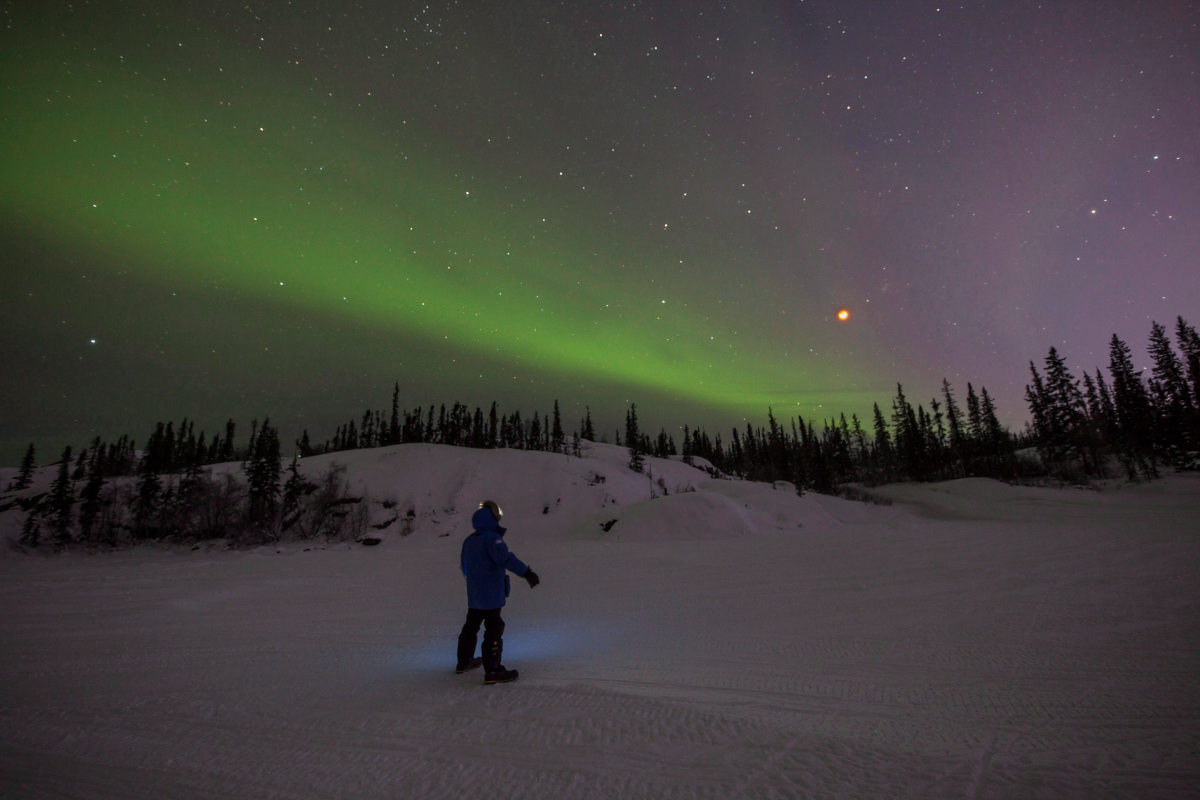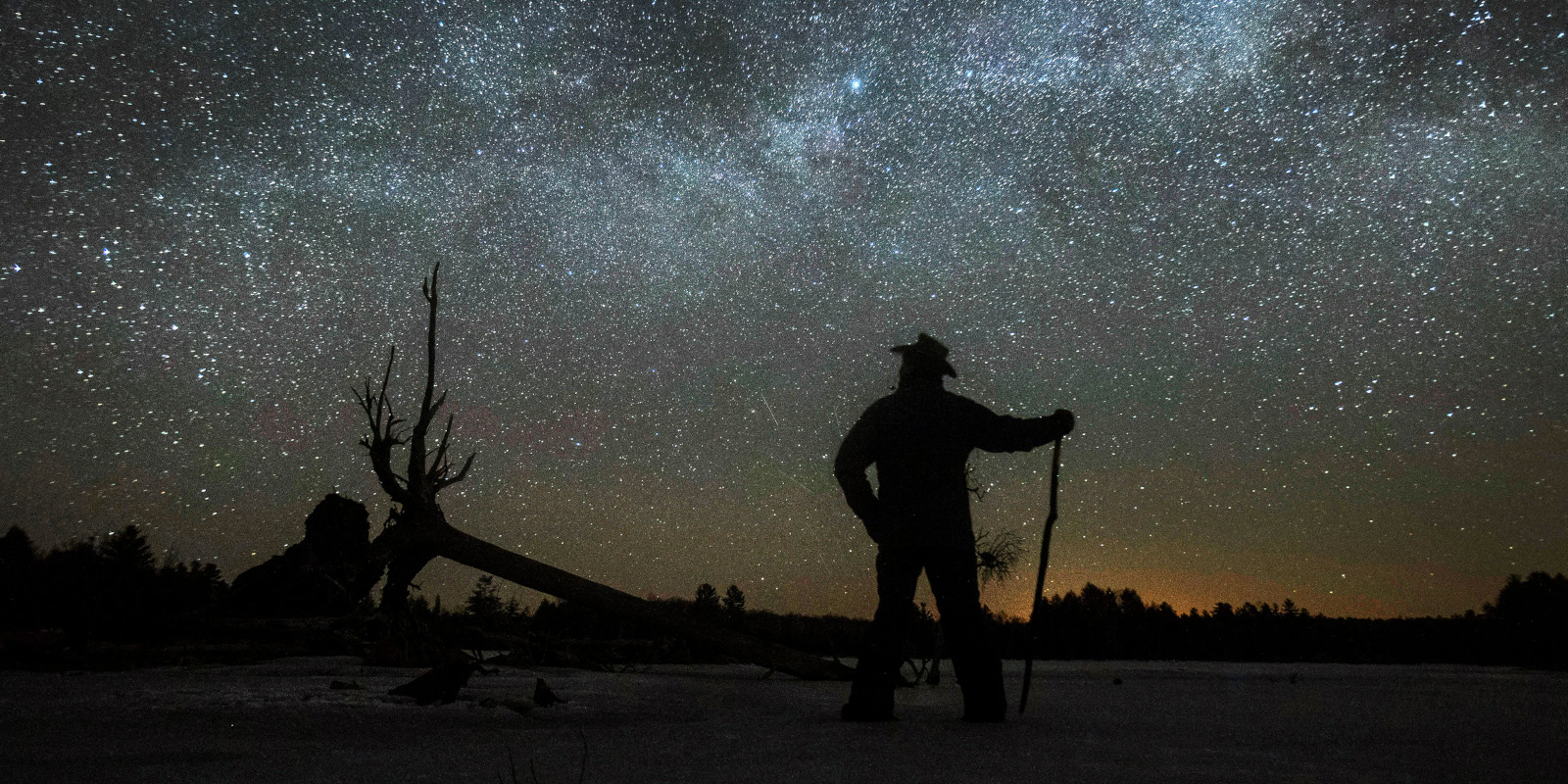The news media in Canada is in crisis. Policy responses to date are failing to solve for the information that citizens need to make informed decisions about important issues and debates. The Future of News series brings together leading practitioners, scholars, and thinkers to imagine new business models, policy responses, and journalistic content that can support a dynamic future for news in Canada.
As fires raged near Yellowknife, Northwest Territories in the summer of 2023, prompting an evacuation of the city on August 16, journalists at Cabin Radio kept Northwesterners informed—even as the reporters themselves were fleeing their homes.
Minute-by-minute online real-time updates, alongside an array of daily stories, informed the public about the path of the fire, evacuation efforts, return orders, and more. “There wasn’t anywhere else to go [to] that was doing that in quite the same way,” says its news editor and co-founder Ollie Williams. Cabin Radio’s on-the-ground coverage reinforced the unique value of the internet radio station and written news service, which exclusively covers the Northwest Territories. “It’s hard to explain how much that means to me as an editor: to see how everybody worked to a degree that, frankly, I hope they never have to again. But their work made a difference, and our audience appreciated it.”

Founded in 2017, Cabin Radio’s staff has grown from just Williams to seven full-time employees. In their first full year in operation, they reached three million page views. Last year, they hit 13 million. “Over time, we’ve seen the engagement of that audience grow,” explains Williams. The site, primarily funded by advertisers, is free to access and Cabin Radio receives $6,000 a month from its 551 Patreon supporters. It also receives federal funding for two “Local Journalism Initiative” (LJI) reporters, one who covers the Dehcho region, predominantly the home to First Nations, and another who covers Indigenous governance. Wilfrid Laurier University in Ontario helps fund its climate science reporting.
Cabin Radio has built a reputation in the community for fast and efficient coverage of local events, Williams says. “If it happens, you report on that immediately. You are very frank with your audience about what you know and what you don’t know at any one moment in time,” he explains. Coverage can range from typical community news— profiles of local teachers winning education awards or art gallery exhibits— to news stories you could only find in the north: winter road openings or massive diesel spills at a diamond mine. The outlet also goes deep on the Northwest Territories’ biggest files with regularity. Coverage of the wildfires continues — from the personal aftermath to the policy reviews at the territory’s legislative assembly.
Its success continues amid major industry turbulence. Earlier this month, Bell Media laid off nearly 500 staff cutting both local news broadcasts and national programming. In 2023 alone, at least 36 local news outlets shut down across Canada, with seven being privately owned radio stations. In total, 516 local radio, print, TV, and online news outlets have closed since 2008. These cuts come as advertising revenues for news outlets continue to dip and a broader rift in trust grows between news organizations and their audiences. In 2018, 58 percent of Canadians said they “trust the news most of the time.” Today, that number is 40 percent. An 18-point drop in five years.
Speaking about the journalism industry at large, “there 100 percent is a crisis of trust,” Williams says. One factor is the relationship news organizations and their reporters have with their audiences. “With larger news organizations, how much of a connection do those reporters really have with their audience? [As a reader], when you see a byline on a large news organization’s website, do you know that person? Does that mean anything to you?” asks Williams. “I do think that your audience being able to recognize who is doing the reporting, and to have some faith in that individual— as well as the institution—is a really important thing.”
Dave Tait, who recently retired as a professor at Carleton University’s journalism school, says, as a reporter in the North in the 80s and 90s, first at the Whitehorse Star in the Yukon and later with CBC North, the relationship between media and their audiences was far more tangible. “You feel as though you’re actually communicating and contributing to the community,” Tait says.
Sometimes, the feedback is immediate and direct, requiring reporters to carry themselves with greater accountability and empathy. “You’d go to the grocery store that afternoon, and people are talking about it. Or they come to you and say, ‘That was good, but there’s this other aspect to it,’” says Tait about Northern reporting.
“But you’re also giving them legitimacy,” he adds, by reflecting their stories, interests and identities back to them. . [Community members] become people who they hear on the radio.”
When outside media outlets, be they national or otherwise, cover local stories of major interest, “They’re talking about them [people], and not talking to them,” Tait says. “One of the dangers, especially if media in the North loses its position,” he continues, “is that people in those outlying areas lose the feeling that they’re worthy of portrayal, worthy of being understood, or worthy of having stories to tell.”

Williams hears this message loud and clear. Being both editorial staff and co-owners who are Northwest Territories locals, he says Cabin Radio has been able to preserve its advertising revenues while ensuring a personal stake in the quality of its product. “There is a real passion to make this succeed and to have it be responsible and reflect the community around it,” he insists. “We’re just a small business in town, at the end of the day. We are just like the coffee shop across the street, just like the local bookstore. We are a small business trying to provide a service for the communities around us.”
But despite its growth, Cabin Radio still faces roadblocks. The outlet’s original plan was to broadcast on FM radio, but the CRTC rejected their application for an FM license last year, citing declining radio revenues as evidence “that the market of Yellowknife, Northwest Territories, cannot support an additional commercial radio station at this time.”
“We think that’s the preservation of a monopoly,” says Williams. Cabin Radio’s main competitor when it came to the airwaves is the CBC. “In no other industry would that happen. For example, the newspaper here in Yellowknife, who protects them?”
Tait views the CRTC situation differently. Creating opportunities for outlets like Cabin Radio is important, he says, but “ensuring commercial or financial viability of organizations so they can operate”, without compromising on their mandate for local news is also important. Balancing these competing interests with the CRTC’s mandate, he says, is “a nightmare.”
“Everybody’s gonna have a reason to fault the decision and be disappointed and think you got it wrong. But these things are fragile,” says Tait.
Even though its licence battle with the CRTC has stretched into a fifth year, Williams wants to stay focused on what they’ve been doing right.
“We have been able to find a business model and a way of doing things that have allowed us to connect with an audience and grow as a company,” he says.
The success of Cabin Radio is rooted in its ability to reflect the needs and interests of its diverse, distinctive audience.
“[The Northwest Territories] has this incredible identity: a mix of the Yellowknife Dene First Nations, the Dehcho [First Nations], the Metis, the mining heritage of Yellowknife,” Williams says. “All these things mix together. What we do is try and reflect all of that back to communities. That is what gives us not only a very clear audience but a very clear bond with them.”
The Future of News series is supported by The Hub’s foundation donors and Meta.
Recommended for You

Peter Menzies: The mainstream media should love Doug Ford, now that he’s subsidizing them

Kirk LaPointe: The heated politics of B.C.’s growing wildfires

Marc Edge: A media subscription voucher system could help revive the news industry—and restore the public’s trust

Can government funding dig media out of its trust deficit? Or is it only making matters worse?











